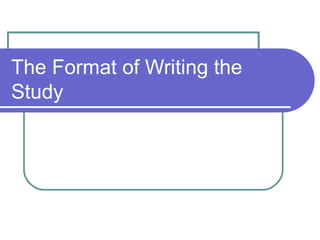The document outlines the steps for planning and conducting data analysis, including determining the method of analysis, processing and interpreting the data, and presenting the findings through descriptive and inferential statistical analysis techniques to answer research questions. It also discusses the components and format for writing up the final research paper, including the preliminary pages, main body, and supplementary pages.





































